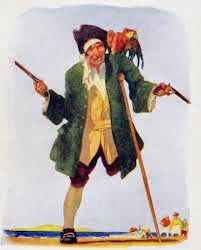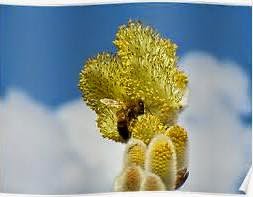#19 in the April 2014 Blog Challenge.
 |
| Kelp Diagram |
There are 18 letters in the Scottish Gaelic alphabet I’ve
been using….so clearly, I came to the end of it yesterday!
So now what?
We-ell, I decided at the outset that I’d spend the remaining
eight blogs writing about a) the accented vowels; b) English letters that I
have subjects for that aren’t part of the Scottish Gaelic alphabet, and/or c)
something else. After all, I’ve never done this
before, so wasn’t sure how it’d work out.
About 3 am this morning, I woke up and thought, “Kelp!” and I can’t
think of Kelp without thinking of the Clearances, so….that’s today’s topic.
 |
| Undersea Kelp Forest |
Kelp is a seaweed that can grow up to 150 ft. high in “kelp
forests.” Medicinal uses of kelp include treating thyroid, hair and skin diseases, and arthritis.
From the 15th to the 19th
Centuries, a process of extracting soda ash from it by burning the harvested
fronds with heather was a major source of income throughout the Highlands and
Islands of Scotland. Soda ash, or sodium carbonite, defined the world chemistry
industry with applications in glass- and soapmaking, bleaching fabric and paper
and in making fertilizer. This extractive process was invented by Andrew
Leblanc, and it was later superseded by a cheaper process invented by Ernest Solway
in 1861.
 |
| Everyone Helped with the Kelp |
Highland and Island crofters, unable to completely
sustain their families on the small tenant farms or crofts, were also fishermen, gathering and burning tons of kept to yield the valuable ash, which was
marketed by the landlord/lairds’ factors or business agents.
There are many aspects in what caused the Clearances. One
was political; unsuccessful rebellions in 1715 and 1745 against the English
resulted in laws to dismantle the clan system—no large gatherings, no wearing
of tartans, no wearing the great kilt, no speaking Scots Gaelic, no playing the
clarsach or harp, among others. The
clan chiefs, those who did not escape to France or were executed, had to pay
heavy fines and/or had lands confiscated, were forced to swear allegiance to
the English Crown, and spend more time at Court. They found themselves
converting to the State’s Anglican church, while their Highland clansmen
remained Catholic; speaking English, and sending their sons to English schools.
Spending less time in the Highlands, they were less close to and cared less
about their people, some becoming absentee landlords.
Economics were changing. Most of the arable lands of
Scotland were in the largely Protestant Lowlands, and the Highland crofters
barely supported their families, so could not contribute much in rents to their
lairds, who felt the need for more income. This worsened for over a hundred
years. One possible solution was sheep, because a large flock could be sustained
on marginal land, tended by a couple of shepherds and their dogs.
However, grazing sheep, unlike cattle, will pull up
plants by the roots, so completely divest an area of fodder, so they need a
large area. Crofters did not want their crops eaten, and on the Islands, there
was a finite amount of room.
 |
| Elizabeth, Countess of Sutherland |
Among the most brutal were the very wealthy Countess and Duke of
Sutherland. One of their original ideas, around the beginning of the 19th
Century, was to move the inland crofters to the coast and have them become
fishermen. It was said that the women were tethering their livestock and
children so they wouldn’t be blown over the cliffs by the wind in that harsh
area. But their second wave of Clearances around 1815 was even more infamous.
Donald McLeod was a witness: "The consternation and confusion were
extreme. Little or no time was given for the removal of persons or property;
the people striving to remove the sick and the helpless before the fire should
reach them; next, struggling to save the most valuable of their effects. The
cries of the women and children, the roaring of the affrighted cattle, hunted
at the same time by the yelling dogs of the shepherds amid the smoke and fire,
altogether presented a scene that completely baffles description — it required
to be seen to be believed.
“A dense cloud of smoke enveloped the whole country by
day, and even extended far out to sea. At night an awfully grand but terrific
scene presented itself — all the houses in an extensive district in flames at
once. I myself ascended a height about eleven o'clock in the evening, and
counted two hundred and fifty blazing houses, many of the owners of which I
personally knew, but whose present condition — whether in or out of the flames
— I could not tell. The conflagration lasted six days, till the whole of the
dwellings were reduced to ashes or smoking ruins. During one of these days a
boat actually lost her way in the dense smoke as she approached the shore, but
at night was enabled to reach a landing-place by the lurid light of the flames.”
 |
| Evicted Family atop Ruined Cottage |
In the Outer Hebridean islands of Barra, Benbecula and South Uist, it was even worse. Gangs hired from Lowland cities by the factor came with him, armed and with torches, when he'd call the people of a township together and gave them the news: they were being evicted, and had one hour (if they were lucky) to get what personal items they wanted to take with them. To hurry them up, the torches were thrown into the thatched roofs of cottage and barns; protesters and livestock were shot. It made no difference what the season or weather was, or if any were sick, old, or a woman in her "crying-time" (childbirth); the factor and his crew were unmoved. The dazed victims were herded through the hills to the nearest port. By the mid-19th Century, Canada was exporting huge cargos of lumber; these lumber ships would be hired cheaply, a couple of decks added, and they'd set across the ocean. You were fortunate if you'd managed to bring a sack of meal with you, for neither food nor fuel was provided. If the weather was bad, the hatches would be battened down for the voyage of two-three months, providing perfect breeding grounds for outbreaks of cholera and typhoid, with no medicine. Many never lived to reach that new land, where they'd be dumped on the quayside to fend for themselves, most with no coin and few tools to make a new life. Is it any wonder the Clearances still generate anger?
The 19th Century's Irish potato blight also had its effect on the Scottish potato crop, and many English believed that
the Celts were an inferior race that should be banished if not exterminated
completely, while Teutonic races such as the Germans should be encouraged to
emigrate to Britain. Canadian officials
dealing with Irish and then Scottish refugees said that the Scots were in worse
shape than any they’d ever seen, some with little clothing to stand up in.
 |
| Ruined Croft |
The tales about the Clearances are hard to hear, but are
truly folktales, honed by the folk and their descendents; in one, a sick old
woman is dragged out into the snow where she dies, cursing the factor with her
last breath; later he dies as a result.
I sometimes tell a fairytale, the only one I’ve ever
found about this period, and sing a song I wrote about it, in which a young
woman laments:
O, what
is wider than the sky?
And what
is deeper than the sea?
And what
is sharper than any stane? [stone
And what
burns hotter than a fire?
O, loss
is wider than the sky,
And pain
is deeper than the sea;
Regret is
sharper than any stane,
And grief’s
cauld fire i’ ma banes. [my bones
Here at
the end of the world,
I lie
and wonder:
Shall I
live—or shall I dee? [die
Ma hame's dsestroyed,
Ma love
lies deid,
Oor
child was stolen, [by fairies
I lost masel’. [mother crazed
with grief
Life’s a
lang road,
and a hard road;
Shall I
tread it tae the end?
"The Lass Wha Bargained wi' the Fairy King" is
one of the most tragic tales I know, one that needs careful telling, although it
ends with a note of hope and finding a new life. It’s the only one I tell in
which I give the audience a choice of endings.
In 1979,
when I taught high school English, one of my students was very angry with me
because the end of The Diary of Anne
Frank upset some of her friends. “Why are you making us read this?” she
demanded. “It’s not as if it’ll ever happen again!”
What are you thinking right now? About Pol Pot? About the smallpox-infested blankets given by the US Cavalry to some Plains tribes? About the Jews being told to register in the Ukraine, which I recently saw on Facebook?
I hope you share my stubborn belief in a future when we are compassionate and caring, valuing all humans despite differences, instead of fearing and despising them!
 |
| Clearances Emigrants' Statue |























































